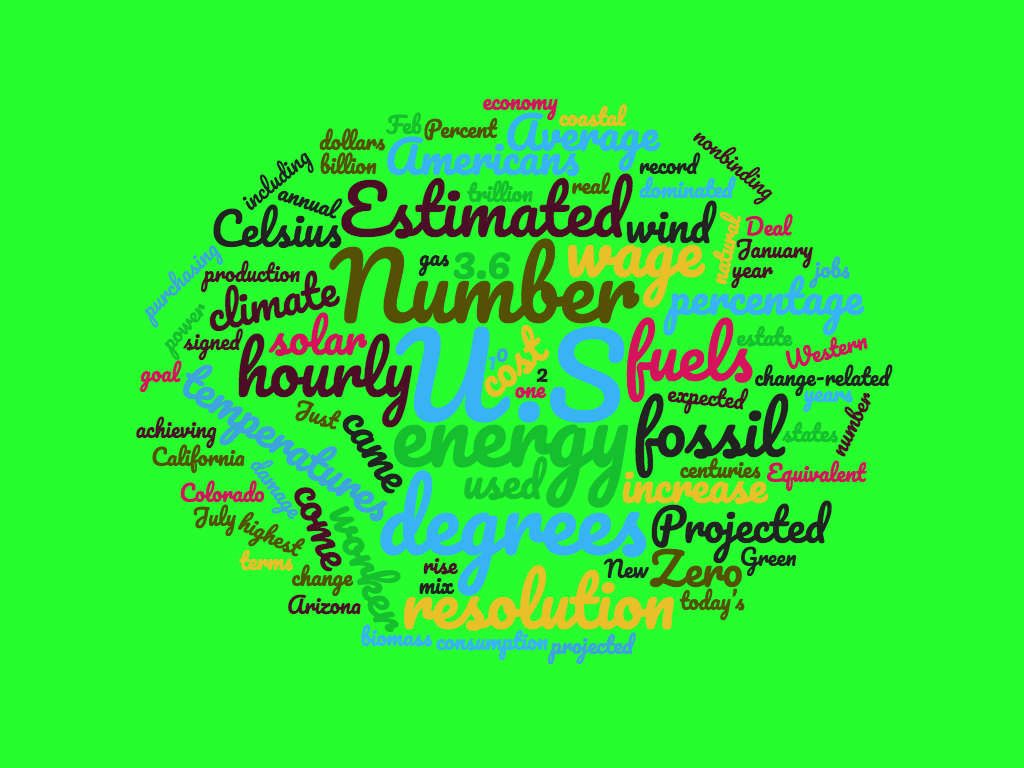Green New Deal context, in words and numbers
By Kate Schimel | February 19, 2019

Editor’s note: This story was originally published by High Country News. It appears here as part of the Climate Desk collaboration.
Not long after Rep. Alexandria Ocasio-Cortez, D-N.Y., was elected last November, she began gathering support for a “Green New Deal,” mobilizing young climate activists and pushing Democratic leaders to pursue the concept. The idea, which was first floated by New York Times columnist Thomas Friedman in 2007, is modeled on Franklin D. Roosevelt’s sweeping Depression-era New Deal and proposes tackling climate change as a massive job creator to boost the American economy. In its current form, it also marries climate action with a host of other progressive aims. On Feb. 7, Ocasio-Cortez introduced a nonbinding resolution articulating what a Green New Deal might include, from eliminating fossil fuels entirely to establishing universal health care and ensuring stronger rights for Indigenous people and nations. Here’s the proposal — and some context — by the numbers:
Number of co-sponsors of the nonbinding resolution as of Feb. 15: 68.
Number of Republicans who have signed on: Zero.
Percentage of co-sponsors who come from Western states, including California, Washington, Colorado and Arizona: 35.
Average hourly wage for a U.S. worker in January 1973: $4.03.
Equivalent hourly wage in today’s dollars, in terms of purchasing power: $23.68.
Average hourly wage of a U.S. worker as of July 2018: $22.65.
Estimated number of jobs in the wind and solar energy industries as of 2017: 457,169.
Estimated percentage of the energy Americans used in 2017 that came from wind, solar, hydropower and biomass: 11.3.
Estimated percentage of the energy Americans used in 2017 that came from fossil fuels: 80.
Percentage of the energy mix in the Green New Deal resolution that would come from fossil fuels: Zero.
Number of years the resolution proposes for achieving that goal: 10.
Number of centuries fossil fuels have dominated U.S. energy consumption: Just over one.
Percent by which natural gas production is expected to rise in 2019, projected to be the highest year on record: 8.
Projected annual cost of climate change to the U.S. economy by 2100, if temperatures increase by 2 degrees Celsius (3.6 degrees Fahrenheit) or more: $500 billion.
Projected cost of climate change-related infrastructure and coastal real estate damage in the U.S., if temperatures increase by 2 degrees Celsius (3.6 degrees Fahrenheit) or more: $1 trillion.
Together, we make the world safer.
The Bulletin elevates expert voices above the noise. But as an independent nonprofit organization, our operations depend on the support of readers like you. Help us continue to deliver quality journalism that holds leaders accountable. Your support of our work at any level is important. In return, we promise our coverage will be understandable, influential, vigilant, solution-oriented, and fair-minded. Together we can make a difference.
Keywords: Green New Deal
Topics: Analysis, Climate Change















It’s an interesting idea to tackle climate change the same way FDR handled the depression. I’m all for any action to reduce climate change. I hope to see more people join in on initiatives like this one.